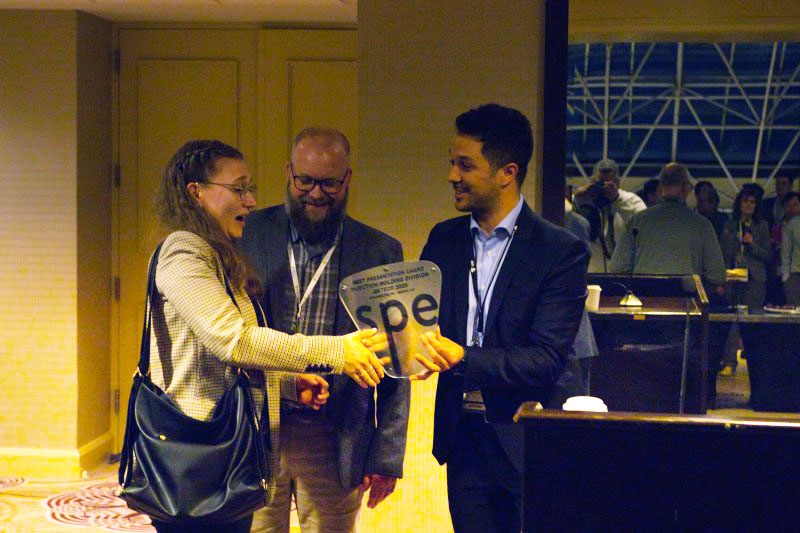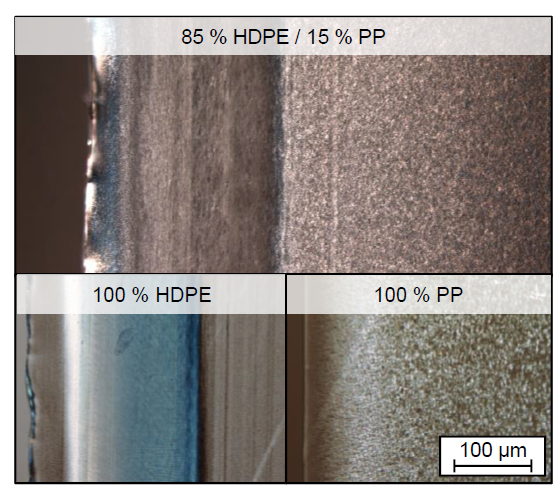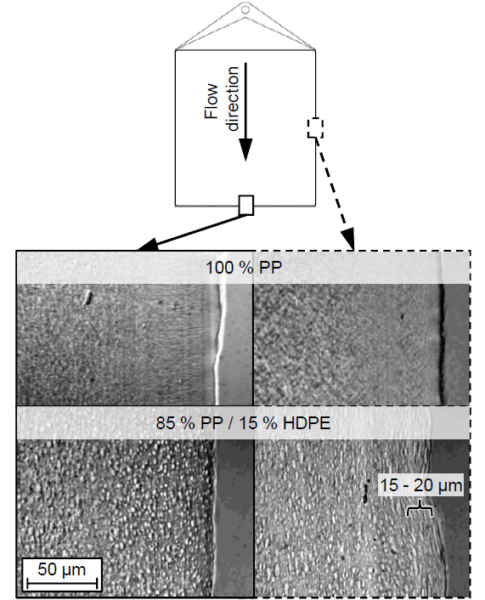Overcoming Segregation Challenges in PCR Processing for Injection Molding

Pia Wagner from the Institute for Plastics Processing (IKV) in Germany received the award for Best Presentation during the Injection Molding chapter’s reception at ANTEC 2025.
The growing demand for post-consumer recyclates (PCRs) in the plastics industry is driven by regulatory policies, such as the EU Packaging Directive, which promotes circular economy practices. However, the processing of polyolefins (PO), specifically polyethylene (PE) and polypropylene (PP), presents significant challenges due to their immiscibility and material contamination.
You can also read: DSC Tools for PCR Blends.
The segregation of these polymers during injection molding affects their mechanical performance and limits their use in high-quality applications. Understanding these challenges and optimizing processing conditions can significantly improve the viability of post-consumer recyclates materials in industrial applications.

HDPE/PP Morphology. Courtesy of SEGREGATION OF IMMISCIBLE POLYMERS DURING INJECTION MOLDING AND THE CONSEQUENCES FOR PCR PROCESSING-ANTEC 2025.
The Challenge of Material Segregation
Recyclates often contain a mix of PE and PP, even after sorting, due to their similar densities and overlapping material properties. Since PP and HDPE are immiscible, their phase separation during injection molding leads to inconsistent mechanical properties and weakened stress and strain transfer in the final product.
Researchers have examined the behavior of PP/HDPE blends during injection molding, focusing on how process parameters and part geometry influence segregation. Differential Scanning Calorimetry (DSC) has confirmed that commercial PO recyclates contain up to 10% foreign polymers, making it challenging to predict rheological and mechanical behavior.
Impact of Processing Conditions on Polymer Blends
Injection molding parameters play a crucial role in determining polymer distribution and phase morphology. Studies show that higher HDPE content in PP weakens mechanical properties, whereas PP in HDPE can improve stiffness due to nucleation effects.
Key processing factors influencing segregation include:
- Shear and pressure levels during molding
- Flow path and holding pressure settings
- Part geometry and injection speed
While adjusting these parameters can help reduce phase separation, they do not fully eliminate segregation. This highlights the need for further material modifications and processing optimizations.

HDPE/PP Morphology. Courtesy of SEGREGATION OF IMMISCIBLE POLYMERS DURING INJECTION MOLDING AND THE CONSEQUENCES FOR PCR PROCESSING-ANTEC 2025.
Improving PCR Performance in Injection Molding
To enhance the use of PCR in injection molding, manufacturers must:
- Analyze and control blend compositions – Understanding the proportion of foreign polymers in recyclates helps in predicting and improving mechanical performance.
- Optimize injection molding parameters – Adjusting shear forces, holding pressure, and flow paths can reduce segregation effects.
- Explore the use of compatibilizers – Adding compatibilizing agents can improve adhesion between PP and HDPE phases, enhancing mechanical properties.
- Investigate higher blend ratios – Studying the behavior of PCR blends with varied compositions will provide insights into their industrial applications.
The Future of PCR Processing
The study of segregation in immiscible polymers provides valuable guidance for improving PCR processing efficiency. Although challenges remain, advancements in material science, processing techniques, and additive technology offer promising solutions. By optimizing injection molding parameters and incorporating compatibilizers, manufacturers can enhance the mechanical performance and durability of PCR-based products.
The path to achieving a fully circular plastics economy requires continuous innovation. By addressing segregation issues in injection molding, the industry can move closer to integrating high-quality PCR materials into mainstream manufacturing, reducing dependency on virgin plastics and contributing to a more sustainable future.
